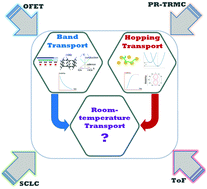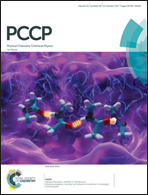Dichotomy between the band and hopping transport in organic crystals: insights from experiments†
Abstract
The molecular understanding of charge-transport in organic crystals has often been tangled with identifying the true dynamical origin. While in two distinct cases where complete delocalization and localization of charge-carriers are associated with band-like and hopping-like transports, respectively, their possible coalescence poses some mystery. Moreover, the existing models are still controversial at ambient temperatures. Here, we review the issues in charge-transport theories of organic materials and then provide an overview of prominent transport models. We explored ∼60 organic crystals, the single-crystal hole/electron mobilities of which have been predicted by band-like and hopping-like transport models, separately. Our comparative results show that at room-temperature neither of the models are exclusively capable of accurately predicting mobilities in a very broad range. Hopping-like models well-predict experimental mobilities around μ ∼ 1 cm2 V−1 s−1 but systematically diverge at high mobilities. Similarly, band-like models are good at μ > ∼50 cm2 V−1 s−1 but systematically diverge at lower mobilities. These results suggest the development of a unique and robust room-temperature transport model incorporating a mixture of these two extreme cases, whose relative importance is associated with their predominant regions. We deduce that while band models are beneficial for rationally designing high mobility organic-semiconductors, hopping models are good to elucidate the charge-transport of most organic-semiconductors.

- This article is part of the themed collection: PCCP Perspectives


 Please wait while we load your content...
Please wait while we load your content...